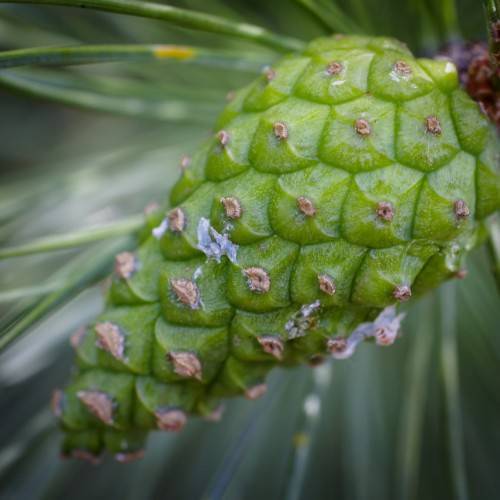
Scotch pine
Pinus sylvestris
Cycle:
Perennial
Watering:
Average
Hardiness Zone:
2 - 7
Flowers:
Flowers In Spring
Sun:
Full sun
Soil:
Acidic, Well-drained
Cones:
Yes
Leaf:
Yes
Growth Rate:
Moderate
Maintenance:
Low
Invasive:
Yes
Care Level:
Medium
watering
Scotch pines should be watered when their soil is dry to the touch. Generally speaking, these plants require about 1 inch of water per week, split into 2-to-3 watering sessions. When watering, slowly add water around the base of the plant until the soil is saturated. Allow the soil to drain well, and avoid overwatering. During warmer summer months, Scotch pines may require more frequent watering due to their shallow roots and need for good drainage. Furthermore, young plants should be watered more frequently than mature specimens.
sunlight
Sunlight is an essential component in the growth and development of the Scotch pine (Pinus sylvestris), helping the tree to maintain its growth and its hardiness. This pine tree needs at least 6 hours of direct sunlight every day during the growing season, and while it does tolerate dappled or partial shade, it will not tolerate full shade and will be more susceptible to disease and pests in shady spots. During the summer, when the days are the longest, the tree is able to receive the maximum amount of sunlight it needs. For optimal growth, a location that is exposed to the sun between the hours of 9 am and 6 pm is ideal. However, during the winter, the hours of direct sunlight for this species decreases significantly. In order for the Scotch pine to remain healthy during this time, the tree needs to receive at least 4 hours of sunlight every day, in order to make the most of the limited available exposure.
pruning
Pruning of Scotch pine (Pinus sylvestris) should be done yearly, preferably during the colder months (late winter/early spring) when the tree is dormant. Pruning should be done to maintain the correct size of the Scotch pine tree, as well as to help keep its traditional pyramidal shape. If no previous pruning has been done, remove up to 1-third of the existing growth. The pruned branches should be cut off about an inch outside of the branch collar (the raised portion at the base of the branch), leaving the collar area intact. Doing so helps to ensure that the pruned area will heal in the fastest possible time.
